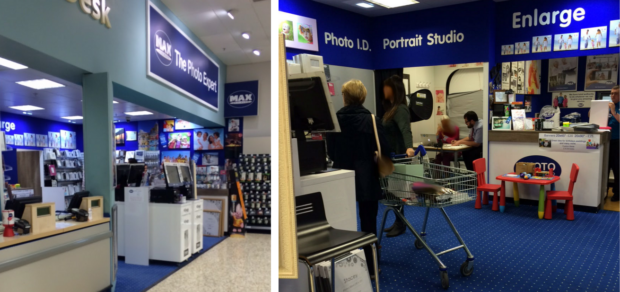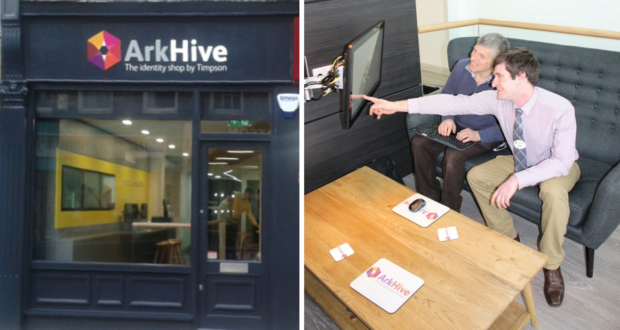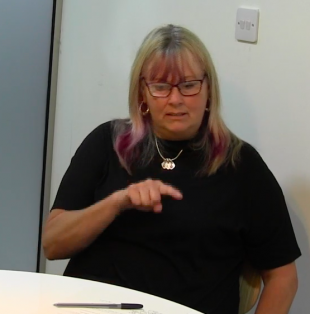Richard Palfery, analyst in the GDS Assisted Digital Team, describes a recent research pilot testing walk-in assisted digital support.
We’re always encouraging services to test their assumptions around assisted digital and we tested our own with a recent research pilot on walk-in assisted digital. We’d assumed that service users needing face to face help might find it more convenient to arrive at a time and place close to where they live, work or shop, such as on the high street or other retail outlet, so we ran a pilot.
First steps
Through the Open Identity Exchange UK (OIXUK), Timpson Group kindly offered venues and to provide the assisted digital support for the online government service that we would be using. Doing research through OIXUK means that the research is open and transparent, with all results written up by independent domain experts and published in the form of freely available white papers (see the Walk-in assisted digital white paper here).
The Home Office generously provided user researchers and we used an agency to recruit twenty six people with assisted digital needs (See our blog post on the rollercoaster recruitment ride here). With all the ingredients in place for the pilot, we were ready to start!
Newbury
Half of the people recruited were helped at a Timpson owned Max Spielmann Photo shop. This one was located at the back of Newbury’s Tesco Extra. The store colleagues juggled existing business, dealt with constant queries from the research team, whilst successfully providing support to the research participants.

The people receiving help brought in their shopping trolleys, nipped in during their lunch breaks, popped in from living across the road and arrived after school drop-offs. Their positive feedback showed that the convenience of a local walk-in service was really valuable and that they really appreciated the support offered in this way. Many of them clearly enjoyed the experience of being helped and said their confidence and skills had grown to use more online services on their own in the future.
Participants included young people who couldn’t afford devices or Internet access as well as those who struggled with devices given as presents. Some of these people had never used a computer mouse before, taking five times as long as a computer savvy person to complete the service. One participant jabbed at the laptop expecting it to be touchscreen and said “Oh dear!” when told it wasn’t. This led us to wonder if touchscreens might be better for some people...
Henley
The other participants were helped at the brand new ArkHive identity shop by Timpson, purpose-built for providing help to people and in a busy street of shops in Henley on Thames. Here people gave positive feedback on the support they received.

As at Newbury there was laughter plus improved skills and confidence. People were positive about being able to tie in their support with other activities, such as visits to the doctor, walking the dog, going shopping and finishing work early.

Touchscreens were available here and really helpful for some people. One wasn’t sure how they’d have coped “with that mousey thing”. A 25 year old receiving help only ever used her smartphone for going online. She said she usually gets help online from her retired father-in-law, in a reversal of stereotypes of family and friends support. We also discovered that people might need to have the touchscreens demonstrated to them. One participant clearly didn’t understand what the helper meant when offered the touchscreen so they used the mouse instead and struggled.

Was it feasible for suppliers?
Having shown that walk-in support worked for the participants (albeit for a test service with recruited users), was it feasible for third parties to provide the support? The answer from Timpson was a clear “yes”. In Newbury the colleagues exceeded their shop’s business targets whilst being able to provide the assisted digital support, even at the busiest times. In Henley, the helpers coped with the surprising surge of people arriving on the Friday morning (people tended to avoid Saturdays, contrary to expectations). For the full report, including recommendations, read the white paper on the OIXUK website.
We'll be blogging more on setting up pilots for users with assisted digital needs, so don’t forget to subscribe to the assisted digital blog.
In the meanwhile, here’s a big thank you to Will, James, Karl, Adam and Paul at Timpson Group for their dedicated help and support of the participants and me. Many thanks also to Clare, Maria, Melanie, Charlotte, Amy and Nick from the Home Office for their excellent user research and Livia, David, Sue and Sarah for their help in doing this project through the Open Identity Exchange.